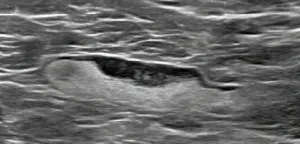Research shows how single celled algae rotate as they swim towards the light
2021-02-24
(Press-News.org) Scientists have made a pivotal breakthrough in the quest to understand how single-cell green algae are able to keep track of the light as they swim.
A team of researchers from the University of Exeter's flagship Living Systems Institute has discovered how the model alga Chlamydomonas is seemingly able to scan the environment by constantly spinning around its own body axis in a corkscrewing movement. This helps it respond to light, which it needs for photosynthesis.
The tiny alga, which is found abundantly in fresh-water ponds across the world, swims by beating its two flagella, hair-like structures that adopt a whip-like movement to move the cell. These flagella beat in much the same way as the cilia in the human respiratory system.
Chlamydomonas cells are able to sense light through a red eye spot and can react to it, known as phototaxis. The cell rotates steadily as it propels itself forwards using a sort of breaststroke, at a rate of about once or twice a second, so that its single eye can scan the local environment.
However, the intricate mechanism that allows the alga to achieve this helical swimming has been previously unclear.
IN the new study, the researchers first performed experiments which revealed that the two flagella in fact beat in planes that are slightly skewed away from each other.
Then, creating a sophisticated computer model of Chlamydomonas, they were able to simulate the flagella movement and reproduce the observed swimming behaviour.
The researchers discovered that the flagella were able to move the Chlamydomonas in a clockwise fashion with each power stroke, and then anticlockwise on the reverse stroke - akin to how a swimmer rocks back and forth when switching from one arm to another. Except here the cell feels no inertia.
Furthermore, they also deduced how simply by exerting slightly different forces on the two flagella, the alga can even steer, rather than just move in a straight line.
The researchers were able to show that by adding in an additional influence, such as light, the alga can navigate left or right by knowing which flagellum to stroke harder than the other.
Dr Kirsty Wan, who led the study said: "The question of how a cell makes these types of precise decisions can be a matter of life or death. It's quite a remarkable feat of both physics and biology, that a single cell with no nervous system to speak of is able to do this...It's an age-old mystery that my group is currently working hard to solve."
For the study, the researchers were able to test various scenarios to determine which variables were influencing the trajectory. Their study showed that by varying different parameters, such as if one flagella is slightly stronger than another, the tilt plane of the flagella or its beat pattern, the algae can manipulate its own movement.
Team member Dr Dario Cortese added: "The agreement of our model with the experiments is surprising really, that we could effectively capture the complex 3D beat of the flagella with a very simple movement of a bead going around in circles."
INFORMATION:
The study entitled "Control of Helical Navigation by Three-Dimensional Flagellar Beating" is published in the journal Physical Review Letters on Wednesday, February 24th 2021.
ELSE PRESS RELEASES FROM THIS DATE:
2021-02-24
NEW YORK (February 24, 2021) -- Nearly half of women with uncomplicated urinary tract infections received the wrong antibiotics and almost three-quarters received prescriptions for longer than necessary, with inappropriately long treatment durations more common in rural areas, according to a study of private insurance claims data published today in Infection Control & Hospital Epidemiology, the journal of the Society for Healthcare Epidemiology of America.
"Inappropriate antibiotic prescriptions for uncomplicated urinary tract infections are prevalent and come with serious patient- and society-level consequences," said Anne Mobley Butler, PhD, lead author of the study and assistant professor ...
2021-02-24
In the first few months of their lives, babies cry, babble, gurgle and make a variety of other peculiar sounds. It can be difficult to imagine that they are actually laying the foundations for later speech with these utterances. However, there is a determining element that proves that even their cries can be assigned to a particular language: the speech melody - or, more accurately: prosody.
"Every language is characterised by specific musical elements, which we call prosody," says Kathleen Wermke. Prosody, in simple terms, is the combination of intonation (melody) and rhythm. Earlier studies have shown that even newborns are able to distinguish different languages, like German ...
2021-02-24
Everyone knows 2 + 2 = 4, but what about mosquitoes plus malaria? Lauren Childs, an assistant professor in the Department of Mathematics at Virginia Tech, says there's an equation for that too.
Childs recently co-authored a report with a team from Harvard University on the role of natural mosquito behavior on transmission of a disease that threatens half the world's population.
The study, "Multiple blood feeding in mosquitoes shortens the Plasmodium falciparum incubation period and increases malaria transmission potential," was published in the December 2020 issue of PLOS Pathogens.
"Worldwide there are about 400,000 deaths and 200 million cases each year from malaria," said Childs, a faculty member with the Virginia Tech College ...
2021-02-24
Prisons with more green space have lower levels of violence and self-harm, according to new research at the University of Birmingham and Utrecht University.
The study is the first to attempt large-scale mapping of green space within prison environments and link it to well-being in a robust, statistically significant way. The results are published in Annals of the American Association of Geographers.
The researchers used GIS mapping to identify the percentages of green space (such as trees, lawns and shrubbery) within prisons in England and Wales. They ...
2021-02-24
A new report shows that British citizens who are missing abroad were more than twice as likely to be found by UK police as police in the country of disappearance.
Research by the Centre for the Study of Missing Persons (CSMP) at the University of Portsmouth also shows they were likely to be missing for much longer than if they'd disappeared in the UK.
The study found that British people who vanish abroad tend to be missing for extended periods, on average 134 days. This compares with 88 percent of people who go missing in the UK being found within the first 48 hours.
Dr Karen Shalev-Greene, Director of the ...
2021-02-24
Extreme weather driven by climate change is making power outages more commonplace even as the need for electricity-dependent home health equipment grows. In this context, battery storage can help protect medically vulnerable households, according to researchers at Columbia University Mailman School of Public Health. The article is published in the journal Futures.
For the millions reliant on electricity for home medical equipment, even short-term power outages can lead to a potentially life-threatening situation. Society's most vulnerable populations--elders, ...
2021-02-24
Heads or tails? If we toss two coins into the air, the result of one coin toss has nothing to do with the result of the other. Coins are independent objects. In the world of quantum physics, things are different: quantum particles can be entangled, in which case they can no longer be regarded as independent individual objects, they can only be described as one joint system.
For years, it has been possible to produce entangled photons - pairs of light particles that move in completely different directions but still belong together. Spectacular results have been achieved, for example in the field of quantum teleportation or quantum cryptography. Now, a new method has been ...
2021-02-24
Knowing the environmental and human-related variables that characterize the favorable areas for the incidence of the West Nile virus, a flavivirus that is transmitted from birds to humans by mosquitoes, is essential to identify those places in Europe at high risk of experiencing outbreaks, even before these are registered, thus enabling preventive measures to be taken.
Researchers of the Biogeography, Diversity and Conservation Group of the University of Malaga have developed risk models for West Nile Fever, the disease caused in humans by this virus, which, based on historical incidence data, may predict areas of future outbreaks a year in advance, as well as detect their intensity.
Artificial intelligence to develop risk ...
2021-02-24
Leesburg, VA, February 24, 2021--An open-access article in ARRS' American Journal of Roentgenology (AJR) describes the clinical and imaging features of axillary adenopathy detected during screening or diagnostic breast imaging after recent coronavirus disease (COVID-19) vaccination to inform the development of follow-up recommendations.
Shabnam Mortazavi of the University of California at Los Angeles reviewed electronic medical records to identify women with post-COVID-19 vaccination adenopathy found from December 2020 to February 2021. For mammography, Mortazavi considered a node abnormal when its size, shape, or density was deemed disproportionate to other axillary nodes (ipsilateral or contralateral). On ultrasound, she deemed ...
2021-02-24
With the voice commands "Alexa Skills," users can load numerous extra functions onto their Amazon voice assistant. However, these Skills can often have security gaps and data protection problems, as a team of researchers from the Horst Görtz Institute for IT Security at Ruhr-Universität Bochum (RUB) and North Carolina State University discovered, together with a former PhD student who started to work for Google during the project. They will present their work at the "Network and Distributed System Security Symposium (NDSS)" conference on 24 February 2021.
More than 90,000 Skills analyzed
In their study, the researchers ...
LAST 30 PRESS RELEASES:
[Press-News.org] Research shows how single celled algae rotate as they swim towards the light


